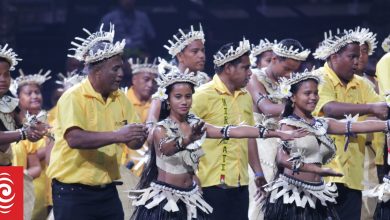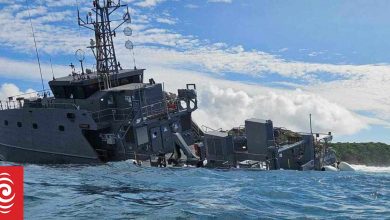Environment kept in play at Kwajalein army base

The US Army says it’s prioritising ‘responsible stewardship’ of the environment of its garrison at Kwajalein Atoll in the Marshall Islands.
Garrison commander Colonel Drew Morgan said the installation is important to both the Marshall Islands and the US.
The two islands of Kwajalein and Roi-Namur are home to approximately 1300 Americans, working for the US Government as military service members, Department of Defense civilians and contractors.
Kwajalein has long been a US military testing site and the nuclear legacy has cropped up in its discussions on its Compact of Free Association with the US.
In March, a full prototype operational hypersonic missile was tested at the Ronald Reagan Ballistic Missile Defense Test Site.
But the Army said they also focus on the environment in the area.
Patrick Chauvey, with the US Army Environmental Command, says Kwajalein Atoll natural resources are dominated by lagoon and ocean-based ecosystems.
“Coral reefs, along with onshore terrestrial habitat, offer a variety of unique plant and animal species that require special regulatory consideration,” he said.
“The coral reef — critical habitat for a number of species — is sensitive to pollution from man-made activities such as sewage discharge, sediment accumulation, and dredging and filling.”
The environmental team, working under an agreement with the Marshall Islands, pays special attention to several animal and plant species, including marine mammals, sea turtles, 64 coral species, marine mollusks, one marine sponge species, eight fish species and one bird species.
“Our responsibility area includes coral reefs, the mid-atoll corridor and ocean waters extending 12 nautical miles where rare, threatened and endangered terrestrial and marine species are present, including sea turtles, giant clams and seagrasses,” Chauvey said.
In 2022, a rare Deraniyagala’s beak whale was discovered taking refuge at the southern end of the atoll lagoon, just offshore from the garrison.
Chauvey said this species had previously been observed only through dead carcasses.
“The most spectacular aspect was that this particular species had never before been witnessed alive,” he said.
“The [garrison] team produced the first photographic evidence of this rare species.”
He said the University of Hawaii team is preparing a scientific publication on this information.
According to the news on Radio New Zealand




